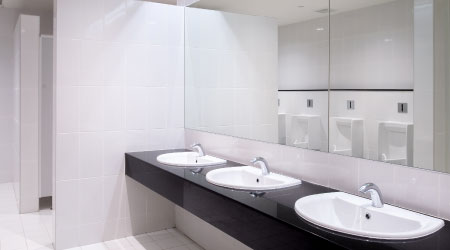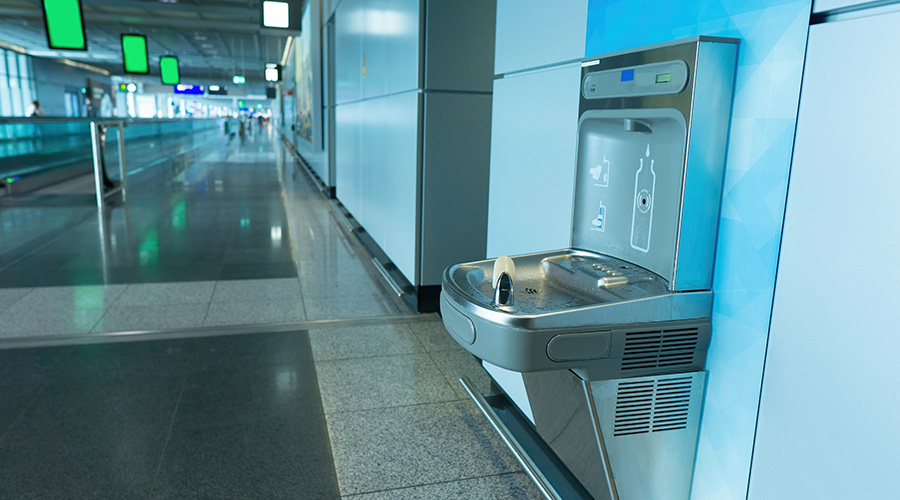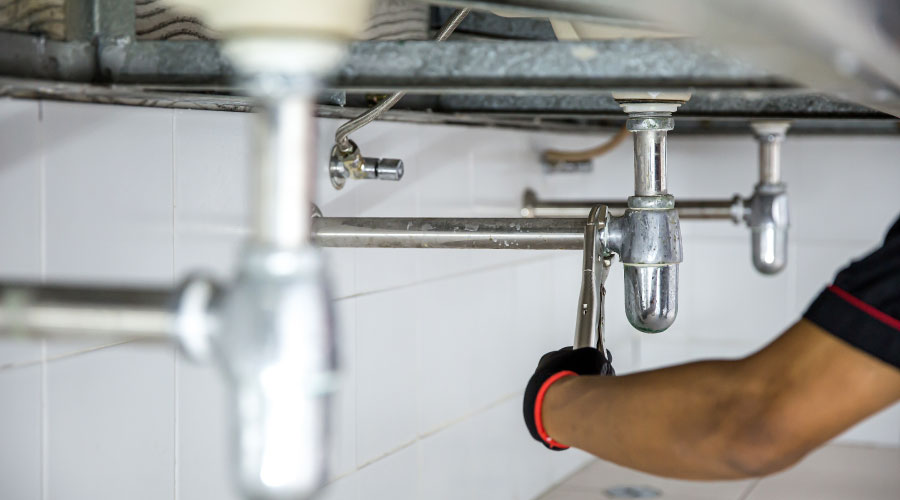Proper Dispenser Specification Eases Maintenance Burden
Strategic dispenser selection and specification can go a long way toward ensuring clean, comfortable restrooms and minimizing maintenance needs. Achieving this goal in modern, state-of-the-art restrooms means having dispensers that are well stocked, easy to operate, and as touch-free as possible.
For dispensers activated by proximity sensors to work as designed, they must be in good operating condition and have fresh batteries and clean sensors. This approach solves two main issues — sanitation and service — at one time. While manufacturers traditionally have not designed all dispensed restroom products for touch-free applications, the approach is rapidly expanding as they rush to meet the demand.
Even some toilet-paper dispensers now offer touch-free use. One design uses coreless paper, which is released in a controlled amount by a proximity sensor when the user’s hand is in motion below the dispenser opening. The unit provides one-handed operation, so it is ADA compliant if installed according to ADA guidelines regarding location and height above the floor.
The operating sensor is located in the dispenser’s assembly, so installers can mount it on either side of the stall, and its battery can last up to one year. Installers also can program the paper length, which promotes conservation. These features contribute to user comfort while cutting material costs and aiding sustainability efforts.
Touchless, air hand dryers and paper-towel dispensers also are part of this trend. While they have been available for some time, many hand dryers still operate via an activation switch. Managers now can specify designs that require the user to simply touch the paper towel to be dispensed.
Cleaning crews need to make sure the unit’s batteries are fresh, the time delay between sheets and the hand-proximity settings are set properly, and installation complies with ADA guidelines — 42-44 inches from the floor to bottom of the unit, with the proper amount of clear floor space around it.
Managers also can specify rugged, heavy-gauge construction and clean-looking surfaces — such as brushed stainless steel for the casing — especially for installation where user volume is heavy. One popular choice is type 304, 22-gauge stainless steel with a satin finish. Also, the operating mechanisms — both for hands-on and touchless varieties — should be able to withstand the constant cycling without jamming or otherwise malfunctioning.
Some dispensers require special care and cleaning. For example, dried soap can build up over time on soap dispensers. This problem eventually will slow or stop the flow of soap. The solution is to clean the dispenser tip regularly, carefully and thoroughly. Workers should test the unit after cleaning to ensure proper operation.
Sensor-operated dispensers that use batteries should have a low-battery alarm so workers have time to change the batteries before the sensor stops working. Some of these devices are designed to provide several weeks or more of life after the indicator goes on, giving workers sufficient time to respond. If the unit operates on electricity, managers should provide for a manual backup in case of power failure.
Related Topics:














